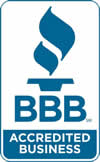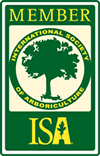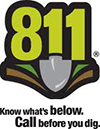Tree Pruning
Cutting trees is our core business. Our tree service companies specialize in the cutting down of trees on residential and commercial property. There is more to tree cutting than pulling out a chainsaw and chopping them down. Safety is our primary concern at all times. The health of your trees is another concern. We want to help you by solving your tree service problems. Most of you who call a professional tree service or tree pruning company have a reason for wanting to cut the tree. There are many reasons to cut a tree and not all of them involve complete tree removal. Hiring us to determine what kind of tree service you need is smart. Unless the tree poses a danger or a threat to your property or persons, you may only need to have your trees pruned.
It is up to you to decide if the tree needs to be removed. Hiring a tree-cutting professional is the only way to go. Young’s Tree Tech, LLC is trained in the safe removal and cutting of trees. For that reason, you need to call us today for a free tree-cutting quote. Our company will arrange to have a tree service representative to inspect your job quickly and we will give you free competitive tree cutting quote.
Special Rates On Large Pines
Multi-Family & Subdivision Discounts
Multi-Tree Discounts
We provide a free service where WE call you when it is time to prune your trees. This program has been especially helpful for those clients with trees that should be pruned during the winter months (November-February) such as pines, birches and fruit trees. There is no obligation to prune your trees when we call, just a simple reminder during that typically busy time of the year. Feel free to call our office to learn more.
Tree Pruning
There is more to tree pruning than you can imagine. Pruning your tree(s) is essential in their growth. Tree pruning can be performed on fruit bearing trees and hardwoods. Careful planning of when you perform tree pruning techniques is essential to maintaining healthy trees.
Some of the most common tree pruning techniques used today are crown reduction pruning, crown raising and crown thinning on larger, more mature trees in order to grow healthy and symmetrically. There are other forms of tree pruning that are necessary in maintaining healthy trees. Often we have to prune or remove live branches as well as the dead ones. Knowing how to properly perform these cuts will enhance tree growth and reduce tree damage. Sometimes heavier limbs when cut, can tear the bark below the limb away from the tree, thus leaving a bigger problem to deal with. Tree services make undercuts on the limb first, almost always eliminates the tearing of bark away from the tree trunk.
There are several tree pruning techniques that should be avoided at all costs.
Topping trees and tipping trees are two common methods of pruning trees. Utility company contractors are the worst about these but they must maintain the right of way, even though it is ugly sometimes.
Tree topping is pruning by removing the entire top of the tree trunk. It is like going three quarters the way up the tree and cutting it off. This practice leads to disease and puts your trees into shock. Tree tipping is pruning by the removing the ends of limbs that extend outwards. The problem with this type of pruning is that it causes excessive budding of the limb from the end of the cut. This is unsightly and the open wound, can cause the branch to decay from the end and work its way back toward the trunk of the tree.
Tree pollarding is a type of pruning where you remove the previous year’s limb growth. Most of these shoots and limbs will never grow properly, so it is important to remove them. Knowing when to prune your trees is very important. There are certain types of trees that can be pruned anytime of the year. There are those trees that should only be pruned during the winter months, when the sap is not rising. Pruning flowering trees should be performed during the non-growing or dormant growing seasons to enhance bud production the following season. You may prune dead limbs any time of the year.
Trees are damaged by storms and they require restoration pruning. Properly pruning trees that are damaged by high winds and years of improper pruning are ideal candidates for this type of pruning.
The type of tree that needs pruning is very important because it may not have the ability to be restored properly. The extent of the damage is also important. Sometimes the tree is damaged severely and cannot be restored successfully even if you have consulted a tree professional
Our tree professionals are trained in tree restoration pruning
We know how to properly diagnose your trees and will help you make the right decision on which type of restoration pruning you will need.
Storm damaged trees with broken limbs are the most common types that require restoration pruning. Some of the most common problems we see with damaged trees is, broken trunks, tree stems split or pulled from the trunk, broken branches, canopy damage. Most of these trees cannot be restored by restoration pruning. The extent of their damage is far beyond help. Most of these trees that are damaged severely, need to be removed by a licensed tree service professional.
Restoration of trees that have been topped is possible in some instances.
To restore the topped trees, you must selectively cut the sprouts that are too close together. You will need to leave most of them intact. However, you need to selectively thin the sprouts so they will grow properly. This way, you will get a more healthy looking limb later. These sprouts will grow into limbs over the next few seasons. A tree expert should be consulted to ensure that they are growing properly. Restoration pruning of topped trees can last for years or until the tree is fully restored.
Tipped tree restoration is similar to that of ones that have been topped. Selectively removing branches on the limbs of trees is where we begin. Pruning a tree this way, allows the limbs not to compete for much needed minerals and starches while growing new limbs. Simply culling the weaker limbs is optimal in the growth and beauty of your tree in the future. Tree tipping will have to be performed on a long period of time to ensure the tree remains healthy.









